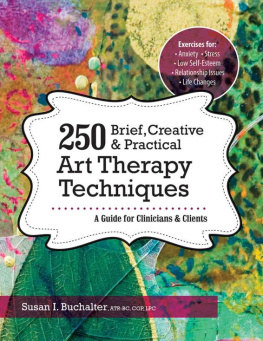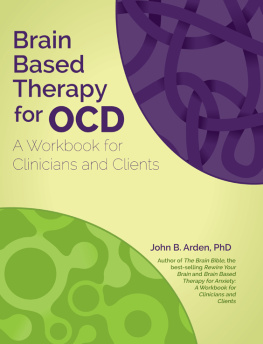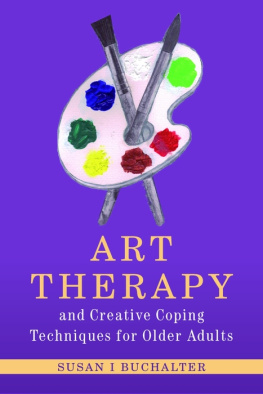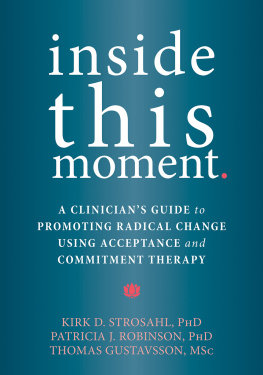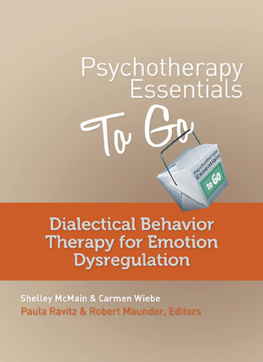Susan I. Buchalter - 250 Brief, Creative & Practical Art Therapy Techniques: A Guide for Clinicians and Clients
Here you can read online Susan I. Buchalter - 250 Brief, Creative & Practical Art Therapy Techniques: A Guide for Clinicians and Clients full text of the book (entire story) in english for free. Download pdf and epub, get meaning, cover and reviews about this ebook. year: 2019, publisher: PESI Publishing & Media, genre: Art. Description of the work, (preface) as well as reviews are available. Best literature library LitArk.com created for fans of good reading and offers a wide selection of genres:
Romance novel
Science fiction
Adventure
Detective
Science
History
Home and family
Prose
Art
Politics
Computer
Non-fiction
Religion
Business
Children
Humor
Choose a favorite category and find really read worthwhile books. Enjoy immersion in the world of imagination, feel the emotions of the characters or learn something new for yourself, make an fascinating discovery.
- Book:250 Brief, Creative & Practical Art Therapy Techniques: A Guide for Clinicians and Clients
- Author:
- Publisher:PESI Publishing & Media
- Genre:
- Year:2019
- Rating:3 / 5
- Favourites:Add to favourites
- Your mark:
- 60
- 1
- 2
- 3
- 4
- 5
250 Brief, Creative & Practical Art Therapy Techniques: A Guide for Clinicians and Clients: summary, description and annotation
We offer to read an annotation, description, summary or preface (depends on what the author of the book "250 Brief, Creative & Practical Art Therapy Techniques: A Guide for Clinicians and Clients" wrote himself). If you haven't found the necessary information about the book — write in the comments, we will try to find it.
Susan I. Buchalter: author's other books
Who wrote 250 Brief, Creative & Practical Art Therapy Techniques: A Guide for Clinicians and Clients? Find out the surname, the name of the author of the book and a list of all author's works by series.
250 Brief, Creative & Practical Art Therapy Techniques: A Guide for Clinicians and Clients — read online for free the complete book (whole text) full work
Below is the text of the book, divided by pages. System saving the place of the last page read, allows you to conveniently read the book "250 Brief, Creative & Practical Art Therapy Techniques: A Guide for Clinicians and Clients" online for free, without having to search again every time where you left off. Put a bookmark, and you can go to the page where you finished reading at any time.
Font size:
Interval:
Bookmark:

250 Brief, Creative & Practical Art Therapy Techniques copyright 2017 by Susan I. Buchalter
Published by:
PESI Publishing & Media
PESI, Inc.
3839 White Ave.
Eau Claire, WI 54703
Cover Design: Amy Rubenzer
Editing By: Marietta Whittlesey
Layout: Amy Rubenzer & Bookmasters
Printed in the United States of America
ISBN: 9781683730958
All rights reserved.

Dedication

Dedicated to my beloved father, Martin George Buchalter, a very creative and artistic man, and a powerful figure and inspiration.
And, thank you to Dr. Alan H. Katz for his superb technical support.
Author Bio


Susan I. Buchalter, ATR-BC, CGP, LPC is a senior clinical therapist and art therapist at The University Medical Center at Princeton, where she introduced art therapy to doctors and staff members in the 1980s. She is a board certified art therapist, licensed professional counselor, and certified group psychotherapist, and has spent over 30 years leading art therapy and psychotherapy groups. She is co-creator of the Garden State Art Therapy Association; now known as The New Jersey Art Therapy Association. She was an adjunct professor at Trenton State College (The College of New Jersey).
Susan is the author of A Practical Art Therapy, Art Therapy Techniques and Applications, Art Therapy and Creative Coping Techniques for Older Adults, Mandala Symbolism and Techniques: Innovative Approaches for Professionals, and Raising Self-Esteem in Adults: An Eclectic Approach with Art Therapy, CBT and DBT-Based Techniques. She has a private practice in Lawrenceville, New Jersey.
Table of Contents

Introduction

When a client walks into a therapy room, he may not know what to expect. He might be anxious, unsure, and fearful. He doesnt know what his role will be and he may fear others wont accept him or think he is unintelligent or unworthy. It takes time for individuals to get used to therapy, whether it is group or individual therapy. Rushing right into deep discussion may create undue stress, and support unhealthy behaviors such as withdrawing, talking too much, acting silly or sarcastic, or leaving the room to alleviate anxiety.
A group that begins with introductions and then a brief warm-up provides a gradual and calming transition into more intensive therapy. Providing the client with a safe and welcoming environment helps him better acclimate to the group environment, other group members, and the therapist who is leading the session. Clients want to know they can fit in and interact appropriately.
Beginning a group gradually using creative warm-ups allows individuals to introduce and express themselves, and experience therapy in a non-threatening and welcoming manner. Warm-up exercises provide a way to test the waters. The client can get a feel for his role in the group, how it is run, its norms and structure, and how individuals tend to interact with each other. He begins making connections almost immediately by sharing the work created during the warm-up exercise. The warm-ups can also be used as effectively in individual sessions, and with people who want to enhance their self-awareness and expand upon their creativity.
Warm-ups can be considered mental stretching. They are usually five to ten minutes in length and help clients become familiar with drawing, self-expression and communicating with others. The warm-ups are relatively simple and provide an almost guaranteed successful outcome, which increases self-esteem and makes it more likely that the client will feel comfortable and share issues and concerns. A sense of mastery is gained since it is almost impossible to fail. Very little is required or expected, and the participant is reassured that he is in charge; there is no right or wrong way to approach the warm-up. The warm-ups are never judged; the results are explored and the client decides when, how, and with whom he will share his artwork. These creative exercises provide those mini successes so necessary for motivation and full engagement in therapy. Individuals gain self-esteem by taking tiny steps forward.
Clients often take a lighthearted approach to the warm-ups. Sometimes simply because they are called warm-ups, and participants know they will not be judged or coerced to do or say something that is too stressful. It is just this relaxed approach and attitude that makes warm-ups so powerful. When clients are not worried about how their work looks or how they come across to others, they frequently let their guard down and share more issues and feelings than they might do otherwise.
If a client discounts his work during the warm-up, it is common for other group members to support him and encourage him to continue working, and not worry about the end product. This interaction becomes the clients first bonding experience with the group. In one recent session, a client named Bob wanted to throw his work out; he thought it was ugly and messy. When he started crumpling it up and walking towards the garbage can, a few veteran clients pleaded with him to keep it. They told him his work was valuable and all that counted was self-expression. They knew drawing ability was not mandatory. The appearance of the work is unimportant; one does not need to be an artist or have drawing ability to engage in these warm-ups. In addition, if writing is included in an exercise the client doesnt need to know how to spell or use grammar correctly. His penmanship does not have to be neat or even legible; almost anything goes during these exercises.
Sometimes there is a client who does happen to have great ability. He is usually admired by his peers and complimented for his talent. This support enhances the clients self-esteem and abilities, and creates a positive relationship with group members from the get-go. Straightaway, he finds his niche within the group.
Warm-ups help create cohesiveness within the group because of the relaxed nature of the brief exercises. Clients are given time to settle down, relax, catch their breath, socialize and meet and greet each other. Warm-ups afford clients a time to unwind while energizing their minds and enhancing their thinking skills. Warm-ups are similar in many ways to that daily cup of coffee so many people enjoy before starting the workday. The exercises, like the coffee, wake people up and clear the mind; ideas begin to percolate and flow. Clients experiment with shape, design, color and self-expression, and often ask questions and make comments relating to artwork, technique, style and others results. In this way they form connections with peers.
Another benefit of the warm-up is that latecomers can enter the group room, make themselves comfortable, and begin the exercise without feeling stressed or left out because the exercises are flexible and easy to complete. If the warm-up is left unfinished, the client has the choice to continue it another time or leave it as it is. There are no expectations about the outcome. The latecomers will not be too much of a disruption because, although significant, the warm-up does not carry the same importance as the central group therapy, which is more structured and more intensive. Interrupting a warm-up, although undesirable, is not as disturbing as interrupting a process group. By the time the warm-up has ended and the process group begins, latecomers are settled and ready to work on their issues.
Font size:
Interval:
Bookmark:
Similar books «250 Brief, Creative & Practical Art Therapy Techniques: A Guide for Clinicians and Clients»
Look at similar books to 250 Brief, Creative & Practical Art Therapy Techniques: A Guide for Clinicians and Clients. We have selected literature similar in name and meaning in the hope of providing readers with more options to find new, interesting, not yet read works.
Discussion, reviews of the book 250 Brief, Creative & Practical Art Therapy Techniques: A Guide for Clinicians and Clients and just readers' own opinions. Leave your comments, write what you think about the work, its meaning or the main characters. Specify what exactly you liked and what you didn't like, and why you think so.

